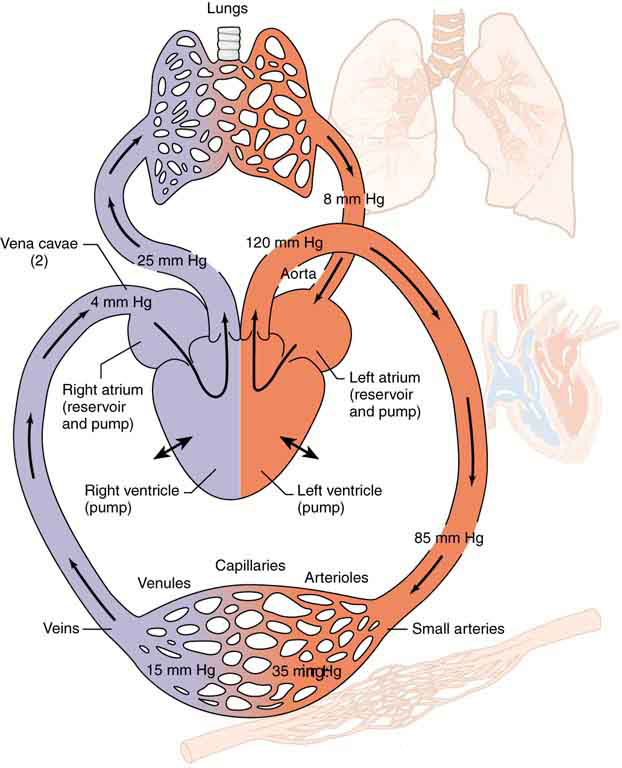| << Chapter < Page | Chapter >> Page > |
Standing a long time can lead to an accumulation of blood in the legs and swelling. This is the reason why soldiers who are required to stand still for long periods of time have been known to faint. Elastic bandages around the calf can help prevent this accumulation and can also help provide increased pressure to enable the veins to send blood back up to the heart. For similar reasons, doctors recommend tight stockings for long-haul flights.
Blood pressure may also be measured in the major veins, the heart chambers, arteries to the brain, and the lungs. But these pressures are usually only monitored during surgery or for patients in intensive care since the measurements are invasive. To obtain these pressure measurements, qualified health care workers thread thin tubes, called catheters, into appropriate locations to transmit pressures to external measuring devices.
The heart consists of two pumps—the right side forcing blood through the lungs and the left causing blood to flow through the rest of the body ( [link] ). Right-heart failure, for example, results in a rise in the pressure in the vena cavae and a drop in pressure in the arteries to the lungs. Left-heart failure results in a rise in the pressure entering the left side of the heart and a drop in aortal pressure. Implications of these and other pressures on flow in the circulatory system will be discussed in more detail in Fluid Dynamics and Its Biological and Medical Applications .
The heart consists of two pumps—the right side forcing blood through the lungs and the left causing blood to flow through the rest of the body.

The shape of the eye is maintained by fluid pressure, called intraocular pressure , which is normally in the range of 12.0 to 24.0 mm Hg. When the circulation of fluid in the eye is blocked, it can lead to a buildup in pressure, a condition called glaucoma . The net pressure can become as great as 85.0 mm Hg, an abnormally large pressure that can permanently damage the optic nerve. To get an idea of the force involved, suppose the back of the eye has an area of , and the net pressure is 85.0 mm Hg. Force is given by . To get in newtons, we convert the area to ( ). Then we calculate as follows:
The shape of the eye is maintained by fluid pressure, called intraocular pressure. When the circulation of fluid in the eye is blocked, it can lead to a buildup in pressure, a condition called glaucoma. The force is calculated as

Notification Switch
Would you like to follow the 'College physics' conversation and receive update notifications?